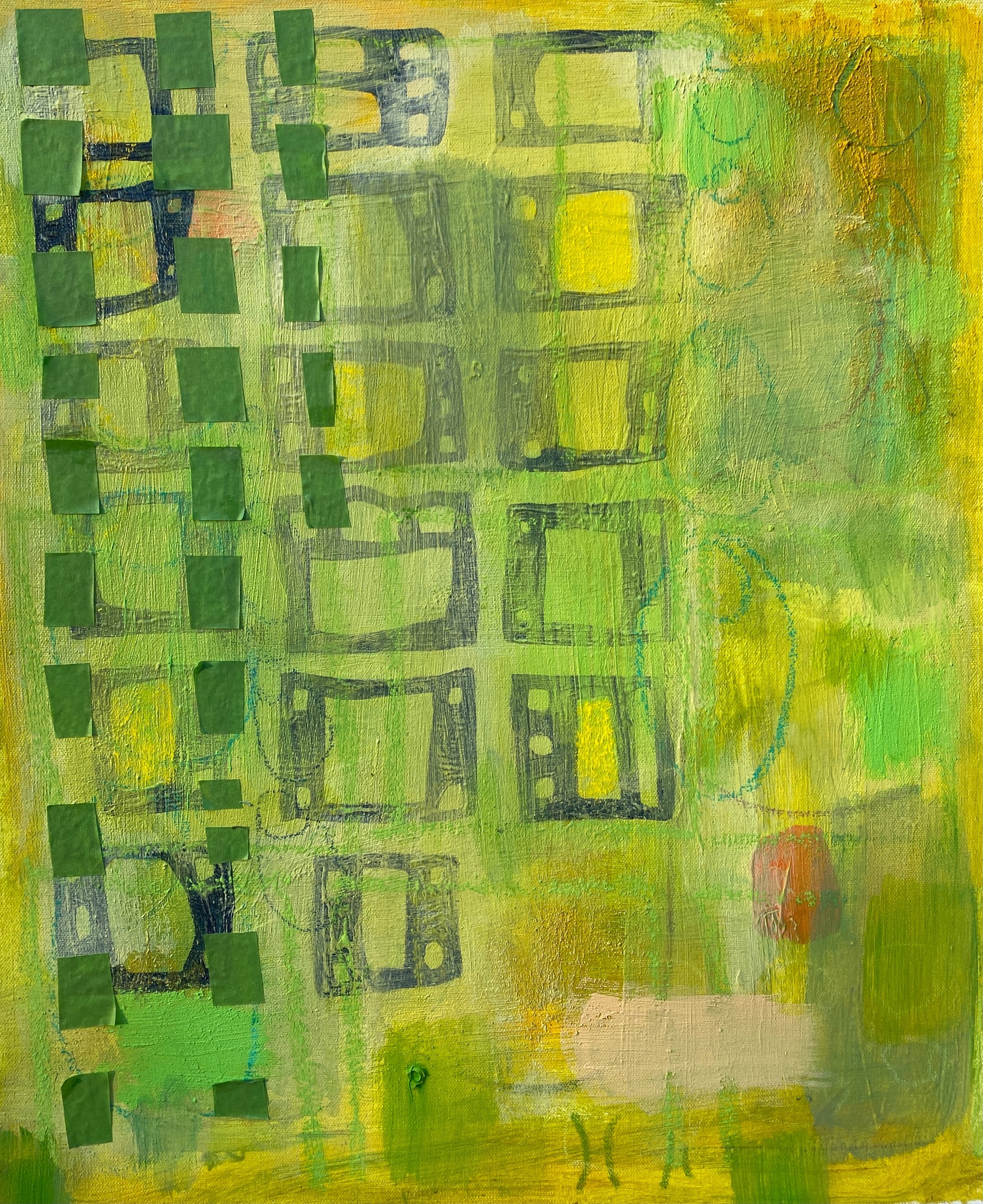










Catal Huyuk Series
My work explores stories from the unwritten past. In many cases, thousands of years and layers of earth separate us from the original makers of the archaeological record, yet an invisible thread connects us through symbols. Interpreting these symbols can be the realm of creativity, but also be the cause of great misunderstanding. Faced with little information, it can be tempting to assign narrative to the unknown. Because the archaeological record is ahistorical, it can become a mirror of our own culture, bias, and folly.
In 1958 German archaeologist James Mellaart believed he found the world’s first map in a mural at the Neolithic site, Catal Huyuk (pictured below). Mellaart believed the bold squares in the mural looked like clusters of domestic dwellings and that the triangular shape was the explosion of the distant volcano, Hasaan Dag. This story, along with others he told about the site, endured. Several years later, Mellaart was exposed as a fraud and yet his interpretation of the mural at Catal Huyuk endured..
The rectangular forms from the mural at Catal Huyuk appear prominently in my work as a reminder that symbols from prehistory easily charm us into story. To represent stratigraphy in my paintings, I layer paint, media, and sand on canvas and board. Between layers I make marks and inscribe messages. The meaning of these messages is obscured by the materials and unremembered by me.
Because the human mind is predisposed to the construction of stories, it can be hard to sit with silence and uncertainty. I am interested in non-linear histories, vacancies in timelines, and what happens when we allow the absence of a dominance plot line to take center stage in diegesis. The challenge today lies not in storytelling but in listening deeply to the stories that we tell.
Example from current series:, Buried Story I, 2022 Mural from Catal Huyuk, 6,700 BCE: https://www.catalhoyuk.com/



